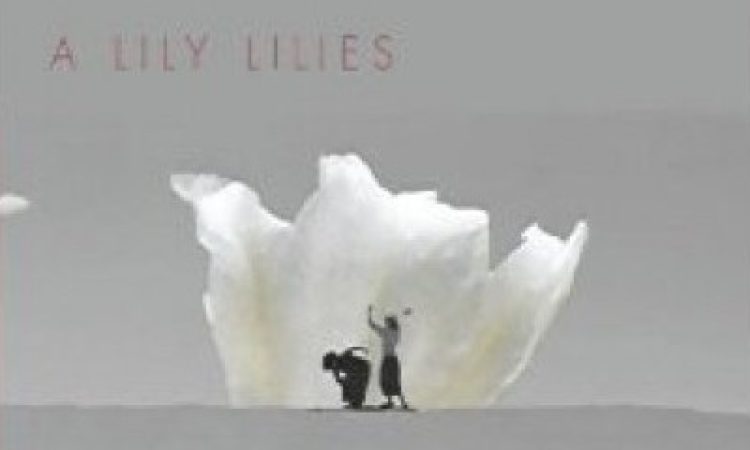Last year, I traveled to Washington D.C. for a writer’s conference and its associated book fair. I spent three days navigating an immense labyrinth of hundreds of independent and university presses. But because I am not origami, a woman made of tightly-folded hundred-dollar bills, I had to put most of the avant-garde poetry and literary fiction I paged through back down before casting apologetic looks at the volunteers manning the booths. I did end up buying several I’d been eyeing for weeks across the internet, and I bought one blind. Without knowing anything about one of its authors and having only heard of the other—but not as a writer, as a choreographer working in Philadelphia—I bought A Lily Lilies from Nightboat Books.
On the cover beneath the title are two small figures gesturing against a soft gray petal-sprung horizon, and below them reads: “Poems by Josey Foo/Notes on Dance by Leah Stein.”
An intro explains that the pieces within are influenced by desert landscapes, specifically those of the historical Navajo nation. (There are several black and white photos of that landscape, and of dancers, throughout the book.) Then the page set-up is explained: “A poem from Josey begins each piece. The piece continues in most instances into Leah’s notes for dance which are preliminary instructions for physical movement and staging.” These dance notes are italicized and set more centrally than Foo’s left justified poems. It is a simple, elegant division of the field of page, and the horizontal space between the parts resonates with sameness and distance. An example (“Gravel” in its entirety):
I catch the flight of butterflies
in a sea of gravel
I catch summer as it is singing
on its saffron-hued rock.
Rock flight saffron saffron caught singing.
Rock flight saffron saffron caught singing.
I lay my instrument
on the arc of the sun; no sentiments
from shadow passing.
Hands. Fingers move as if catching darting light.
People on floor in arc of the sun.
One dancer comes through dancing “rock flight” in saffron yellow.
People on floor – sing/hum and make gentle clicking sound
of stones.
Something happens in that division, in many of the gaps between Foo and Stein—a making visible of the act of translation. Laid bare, translation then evolves into an act I might call accompaniment.
I am fawning. This book approaches, philosophically, how I want art to work: as conversation. In this case, the authors are speaking in the native language of one of them (poetry) to discuss an interest—the Southwestern desert—a subject matter that has already been presented with/in dance on the stage (in a performance by Stein called Imprint). This book is a continuation of their discussion. Its minimal presentation is key to its success in being overheard. Two women are talking of a place poetically, theatrically, kinesthetically: allowed to listen, I learn as much from the silence of white space as from the words themselves.
The sounds and images that move Stein are evident in her responses to Foo’s poems, and not only do her reactions/elaborations enrich my own reading of Foo’s work, they are often poetry in their own right. The pages double back upon themselves, insisting on a careful and often-circular reading process. I sit with each piece as if in a landscape. I let this conversation—its gaps, its repetitions, its divergences—surround me. Imagining the dance that might emerge from the unspoken divide between the spare passages is a deeply satisfying act, but it is only one of many ways I am bid to engage. This book reads like an invitation to inhabit the in-between spaces of the world: places where words may have bodies, where a desert ridge is a swell of page, where birds bloom, lilies lily, and dancers are asked to make the sound of stones. The fact that I will never hear exactly what that sound is makes it all the more resonant. I too am folded in.
A Lily Lilies by Josey Foo and Leah Stein, Nightboat Books.






